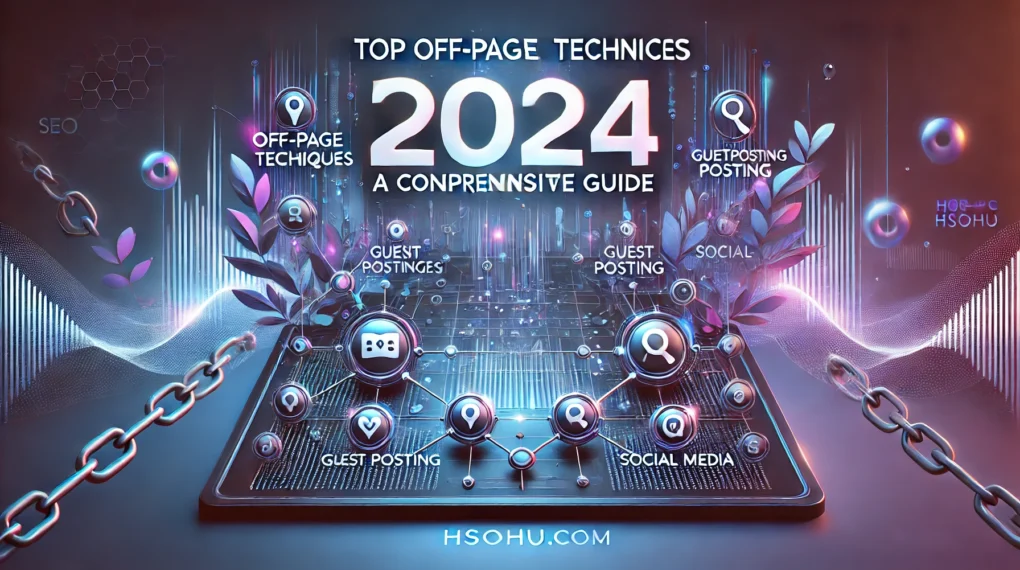In the ever-evolving world of SEO, staying ahead of the curve requires more than just on-page optimization. Off-page SEO is where your website gains authority, credibility, and visibility in the eyes of search engines. In 2024, the emphasis remains on quality over quantity, relationships over automation, and strategy over shortcuts.
Let’s dive into the most effective off-page SEO techniques for this year, blended with a human touch to guide your success.
1. Start with a Strong On-Page SEO Strategy
It might seem counterintuitive, but a solid on-page foundation is critical for off-page success. When your content is well-structured and your site is user-friendly, it naturally attracts backlinks and engagement.
- Use internal linking to guide users and search engines through your site.
- Create pillar content that positions you as a thought leader in your niche.
Think of it this way: your website is the host of a party. The better the ambiance and hospitality, the more likely guests (links) are to visit and recommend your event.
2. Build a Brand, Not Just a Website
Your brand is your digital identity, and in 2024, search engines reward trust and recognition. When people trust your brand, they talk about it, link to it, and engage with it.
- Maintain a consistent tone and presence across social media, blogs, and forums.
- Partner with influencers and industry experts to amplify your brand’s reach.
- Showcase user testimonials, reviews, and success stories to build credibility.
A strong brand doesn’t just drive traffic; it earns loyalty.
3. Backlink Building: Quality Over Quantity
Backlinks remain the backbone of off-page SEO. But here’s the catch: not all backlinks are created equal. Focus on acquiring links from authoritative, niche-relevant websites rather than a large volume of low-quality links.
- Build relationships with industry blogs and journalists.
- Share research-driven content, infographics, or case studies that are link-worthy.
- Avoid spammy link farms—they can harm more than help.
Remember, a single link from a respected source can outweigh dozens from irrelevant sites.
4. Analyze Your Competitors
Your competitors are your greatest teachers. Use tools like Ahrefs, SEMrush, or Moz to study their backlink profiles.
- Where are they getting their links from?
- Which content pieces are driving the most backlinks?
Identify gaps in your strategy and seize opportunities they might have missed. Think of it as peeking into their playbook and planning your moves accordingly.
5. Leverage Popular Yet Underutilized Content
In every niche, there’s content that is widely read but poorly linked. Seek out these gems and create better versions of them.
- Add more data, insights, or visuals.
- Optimize for SEO while enhancing readability.
Then, promote your improved content to the same audience for maximum impact.
6. Guest Posting Done Right
Guest posting isn’t dead—it’s just evolved. In 2024, it’s all about delivering value.
- Write guest posts for high-authority blogs in your niche.
- Focus on solving real problems for their audience.
- Naturally include links that complement the content instead of forcing them.
Think of guest posts as conversations where both parties—writer and reader—walk away with value.
7. Brand Mentions: The Hidden Gems
Sometimes, your brand gets mentioned but without a backlink. These unlinked mentions are low-hanging fruit.
- Use tools like Google Alerts or Mention to track brand mentions.
- Politely reach out to webmasters, thanking them and requesting a link.
A little gratitude goes a long way in turning mentions into valuable backlinks.
8. Harness the Power of Social Media
Social media isn’t just for selfies and memes—it’s a powerful off-page SEO tool.
- Share your content consistently across platforms like LinkedIn, Twitter, and Pinterest.
- Engage with your audience to encourage organic shares and discussions.
When people talk about you on social media, they’re often linking to you as well.
9. Repurpose Your Content
Don’t let great content gather dust. Repurpose it into formats that cater to different audiences:
- Turn blog posts into infographics for Pinterest.
- Transform a case study into a video explainer for YouTube.
- Create carousel posts from listicles for Instagram.
This approach maximizes visibility and improves the chances of earning backlinks.
10. Regular Backlink Audits: Clean the Slate
Not all backlinks are helpful. Over time, your profile might accumulate spammy or harmful links.
- Use tools like Google Search Console or Ahrefs to identify toxic links.
- Disavow them to maintain a healthy link profile.
Think of it as pruning a tree—removing the deadwood helps the healthy branches thrive.
11. Collaborate with Influencers
Influencers aren’t just for product promotions. They’re excellent partners for content amplification.
- Collaborate with influencers to create and share valuable content.
- Their endorsement can bring traffic, links, and a boost in credibility.
12. Stay Consistent and Monitor Progress
The best strategies are those you can measure. Use analytics tools to monitor:
- Organic traffic growth.
- Quality and quantity of backlinks.
- Search engine rankings.
Consistency is key. Off-page SEO is a marathon, not a sprint.
A Final Word: Off-Page SEO Is About Relationships
At its heart, off-page SEO is about building trust—trust with your audience, trust with search engines, and trust with your industry. By focusing on creating value, fostering relationships, and maintaining ethical practices, you’ll set yourself up for long-term success.
So, roll up your sleeves, implement these strategies, and watch your website soar in the rankings. The web is a vast, interconnected world, and you have the tools to make your mark.


